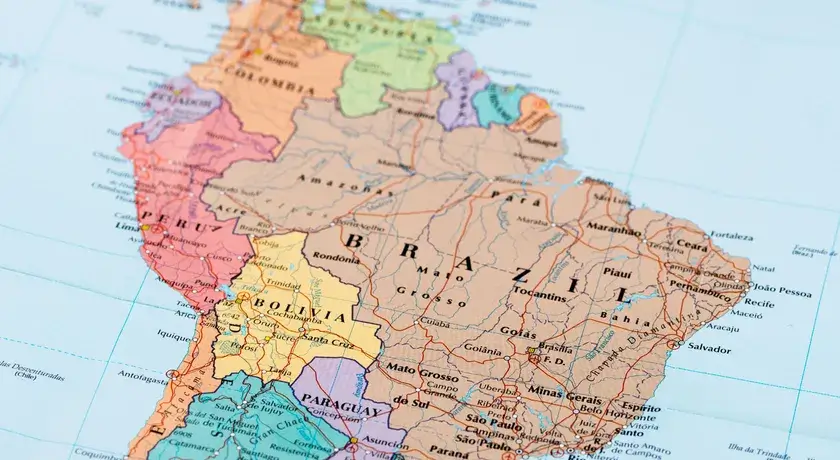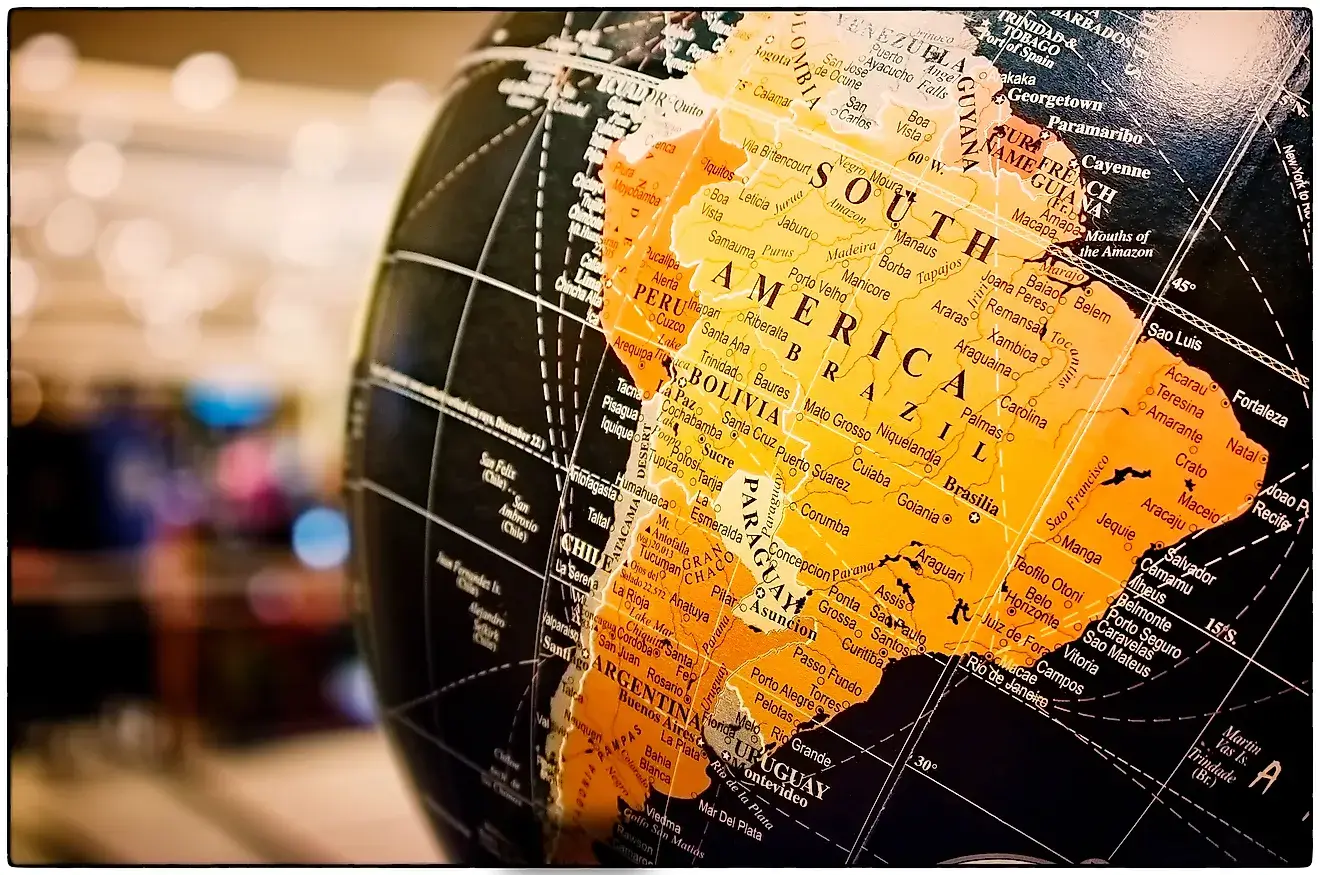South America is not part of the United States of America. In fact, South America is a separate continent, located south of North America and connected by the Isthmus of Panama. It is bounded on the west by the Pacific Ocean, on the north and east by the Atlantic Ocean, and on the south by the Southern Ocean. South America includes twelve sovereign states, two non-sovereign territories, and one dependent territory.
A brief overview of the North American and South American continents
North and South America are two separate continents located in the western hemisphere of the Earth. North America is bordered by the Arctic Ocean to the north, the Atlantic Ocean to the east, the Pacific Ocean to the west, and the Caribbean Sea to the south. It includes Canada, the United States, Mexico, and several smaller island nations in the Caribbean Sea. South America is located further south and is bordered by the Pacific Ocean to the west, the Atlantic Ocean to the east, and the Southern Ocean to the south.
It includes twelve sovereign nations such as Brazil, Colombia, and Peru. South America is often considered a subcontinent of the Americas due to its distinct cultural and geographic characteristics. The two continents are separated by the narrow Panama Canal and have different climatic zones, with subarctic and tropical climates in the north gradually becoming cooler in the south. The Americas are rich in natural resources, diverse cultures, and historical significance.
A brief overview of South American Continents

South America has a total area of over 17.8 million square kilometers and a population of more than 430 million people. The majority of the population resides near the coasts of the continent, while the interior and eastern regions are sparsely populated. The landscape of South America is diverse, with the Andes mountain range dominating the western part of the continent and vast lowlands in the east. The continent is home to several natural wonders such as the Amazon Rainforest, the largest in the world, and the Angel Falls in Venezuela, the highest waterfall on the planet.
The blend of indigenous, European, and African cultures has given rise to unique customs, music, and traditions. The official language of most of South America is Spanish and Portuguese, although several indigenous languages are also spoken. South America has a rich history of colonization, independence movements, and political turmoil, leading to a diverse mix of political systems and economic conditions across the continent.
The Americas: A Tale of Two Continents
- The Americas present a unique tale of two continents, each with their own distinct culture, climate, and history. North America and South America comprise the landmass, covering 28.4% of Earth’s land area and 8% of its surface. The topography is characterized by the dominating Rocky Mountains along the west coast and the vast river basins of the east.
- Human habitation in the Americas dates back thousands of years, with the first migration appearing between 20,000 and 16,000 years ago.
- A second wave followed from Asia, and the final wave occurred around 3500 BCE, completing the settlement by indigenous peoples. The first European settlement was by Christopher Columbus in 1492, followed by Spanish conquest in the 16th century, which resulted in the decimation of the native population due to introduced diseases and mass enslavement.
- Today, almost a billion people reside in the Americas, with two-thirds living in North America and Latin America. Major cities like New York, Los Angeles, and Mexico City boast populations of over ten million inhabitants. Uniquely, the Americas have a shared cultural heritage due to European colonization, which resulted in the use of West European languages like English, Spanish, and Portuguese, and the spread of Christianity.
Relations between the USA and South America
Relations between North and South America have been multifaceted and complex, marked at times by strong regional cooperation and at others by economic and political tension and rivalry. Historically speaking, bilateral relations between the United States and most South American countries were limited prior to the late 1800s, with the US only having closer ties with nearby Canada and Mexico, and some British-linked Caribbean islands. The United States had no involvement in the process by which Spanish colonies became independent in the early 19th century.
As time passed, the US became increasingly interested in the region’s economic growth, leading to the creation of a Pan-American Union under American leadership. However, unrest in Cuba in the 1890s sparked a US intervention, resulting in the Spanish-American War and the acquisition of Puerto Rico and setting up a protectorate over Cuba. The building of the Panama Canal absorbed the US attention from 1903, and with the focus on the canal’s protection, they intervened in several South American countries, including Haiti and Nicaragua.
Despite these interventions, by the late 20th century, most South American countries have established cordial ties with the United States, which is now its fastest-growing trading partner, though some tensions still remain. In recent years, the region’s expanding relations with other countries, including China and India, has shifted US dominance in the region, prompting experts to recommend policy changes focusing on poverty, inequality, public security, migration, and energy security, in coordination with multilateral institutions, civil society organizations, and local leaders.
Understanding the geography of South America
South America is not part of the United States of America, yet the two continents share a long history and connection. South America is the fourth largest continent and is situated in the southern hemisphere, below North America. It encompasses 12 countries, including Brazil, Argentina, Colombia, and Peru, as well as three territories.
Stretching over 6,880 miles from Colombia to Cape Horn, South America boasts a diverse geography. The continent is home to the world’s largest rainforest, the Amazon, and the longest mountain range, the Andes. Additionally, South America has over 400,000 miles of coastline and numerous rivers, including the Amazon River, the second-longest river in the world.
- Being a large continent with diverse habitats, South America is also home to a rich variety of flora and fauna. Amazon rainforests are the home to millions of unique species, some found nowhere else but here. Other unique creatures of South America include jaguars, tarantulas, capybaras, and anacondas.
- Tourism in South America has also been growing, with visitors from around the world flocking to see sites like Machu Picchu, the Christ the Redeemer statue, and the Iguazu Falls. The continent is also known for its diverse and rich culture, with a mix of Native American, African, and European influences seen in its music, dance, food, and art.
In conclusion, South America is not part of the United States of America. However, it is a vast and diverse continent that possesses a unique geography, flora and fauna, and cultural heritage, which makes it an important region to understand and appreciate.
Conclusion
South America and the United States are two separate entities. South America occupies the southern portion of the landmass generally referred to as the New World, the Americas, or simply America. The continent is compact and roughly triangular in shape, being broad in the north and to a point—Chile—in the south. It borders the Pacific Ocean to the west, the Atlantic Ocean to the east, and the Caribbean Sea to the north.
The continent is home to twelve sovereign states, two non-sovereign territories, and two dependencies. Its population as of 2021 has been estimated at more than 434 million, making it the fourth most populous continent. In contrast, the United States is a country located in North America and comprises 50 states, one federal district, and five major territories. It has a population of more than 331 million people as of 2021.
References:

